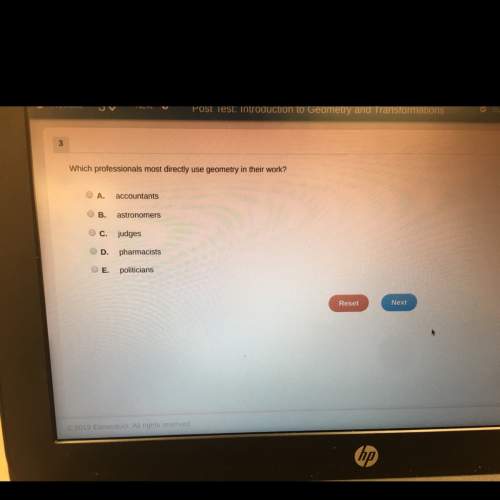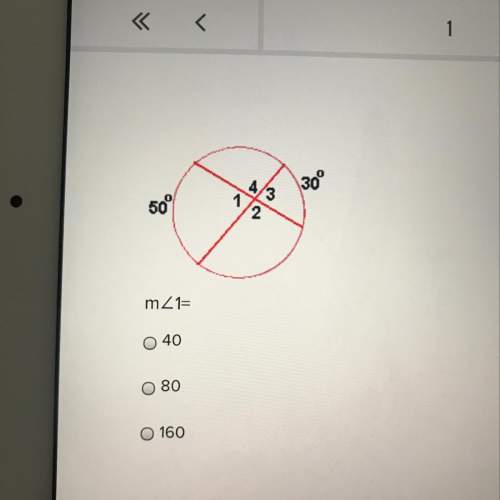
Mathematics, 24.10.2020 03:00 rainbow7020
It’s time to sit down and eat your meal with your friends. One of your friends brought his math homework. He’s struggling with fractions and wants some help looking over his work while you all enjoy your potluck meal. Review each problem and let him know what (if anything) he did wrong. If his answer is incorrect, write “no” in the third column and explain what mistake he made. Then show the steps that he should take to get the correct answer in the fourth column. If his answer is correct, write “yes” in the third column and you don’t need to fill out the fourth column. PLZ HELP


Answers: 1


Another question on Mathematics

Mathematics, 21.06.2019 17:00
In the given figure ar(adf) =ar(cda) and ar(cdf) = ar(cdf). show that abdc and cdfe are trapeziums.
Answers: 2

Mathematics, 21.06.2019 18:30
Which of the choices shown could be used to prove that aacp=abcp ?
Answers: 1

Mathematics, 21.06.2019 21:30
In a test for esp (extrasensory perception), the experimenter looks at cards that are hidden from the subject. each card contains either a star, a circle, a wave, a cross or a square.(five shapes) as the experimenter looks at each of 20 cards in turn, the subject names the shape on the card. when the esp study described above discovers a subject whose performance appears to be better than guessing, the study continues at greater length. the experimenter looks at many cards bearing one of five shapes (star, square, circle, wave, and cross) in an order determined by random numbers. the subject cannot see the experimenter as he looks at each card in turn, in order to avoid any possible nonverbal clues. the answers of a subject who does not have esp should be independent observations, each with probability 1/5 of success. we record 1000 attempts. which of the following assumptions must be met in order to solve this problem? it's reasonable to assume normality 0.8(1000), 0.2(1000)%30 approximately normal 0.8(1000), 0.2(1000)% 10 approximately normal srs it is reasonable to assume the total number of cards is over 10,000 it is reasonable to assume the total number of cards is over 1000
Answers: 1

Mathematics, 21.06.2019 22:10
On a piece of paper, graph y< x-1. then determine which answer choicematches the graph you drew.13. z3. 2(3.290-1)
Answers: 2
You know the right answer?
It’s time to sit down and eat your meal with your friends. One of your friends brought his math home...
Questions






Social Studies, 04.04.2020 10:13



Spanish, 04.04.2020 10:13

Mathematics, 04.04.2020 10:13




Arts, 04.04.2020 10:13



Mathematics, 04.04.2020 10:14


Mathematics, 04.04.2020 10:14





